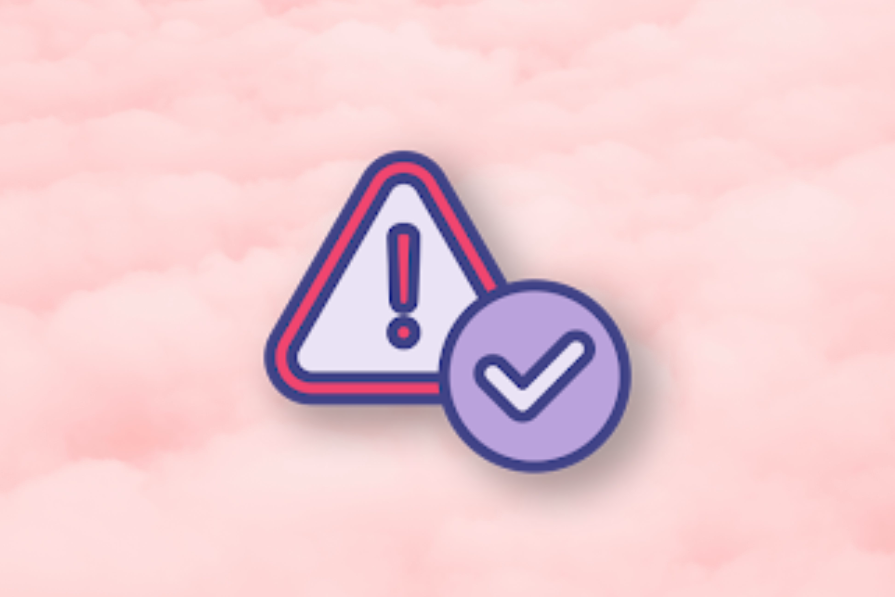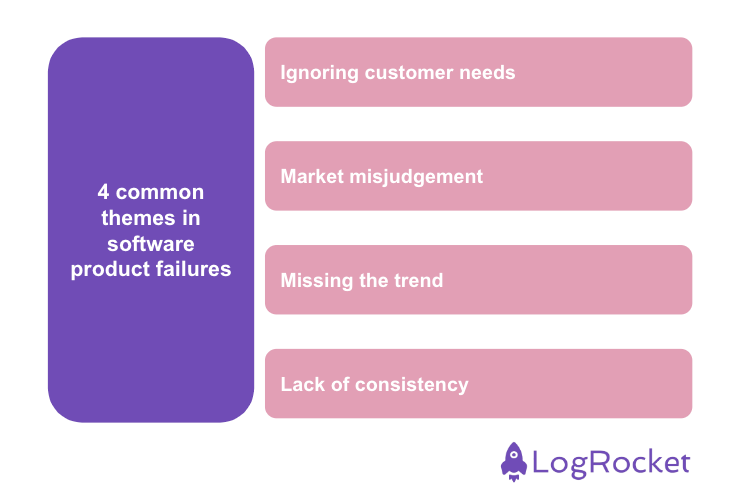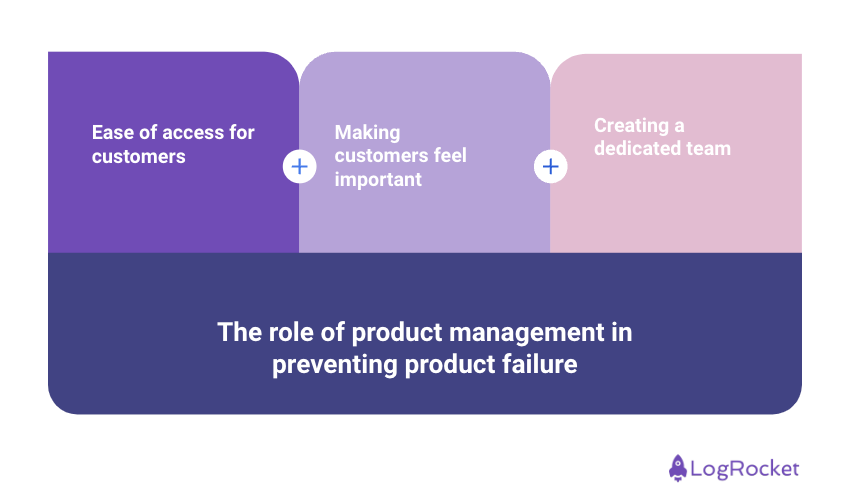To become a successful product manager, it’s a given that you have to work as hard as possible. You might have months of sleepless nights ahead of a product launch. And when it’s time to go live, you’ll wait with excitement. All the metrics, data, and analysis you made will make a difference, but success isn’t always directly proportional to the effort you put in.

There are countless types of failures and thousands of different factors which can affect your success. As a product manager, your role requires you to remove those obstacles from your product’s way. But how?
You can learn a lot of lessons from product failures.
In this article, you’ll learn four common types of product failures. Alongside this, you’ll see how big companies make mistakes because of a lack of information and learn how to prevent your product from those failures.
There are countless examples of failure and the accompanying reasons for them. That said, many of them tend to involve the following four themes:

Of all the product mistakes made, the biggest one is creating/renewing a product without evaluating customer needs. All products are developed to solve a customer need or problem. Even if you create the most amazing product in the world, it won’t do anything unless someone uses it.
As a product manager, every step you take should serve a customer pain point. Ignoring customer needs or feedback drags products into big failures. You can engage with the customers with surveys, forums, or you can use product data metrics to understand their needs. Your product roadmap needs to serve the customers, not just a new idea without any data.
Coca Cola’s “New Coke” product is one of the best examples of this failure type. New Coke was a sweater version of coke that nobody asked for. The Coca Cola company decided to create a new version without any market analysis, customer feedback, and technical reasons.
And unsurprisingly, it failed. Because users didn’t need a sweater version, they already liked the current recipe. After checking the results, the company erased its mistake immediately and released the old recipe again.
Market misjudgment occurs when you complete faulty or fail to complete enough product-market fit analysis. Market-fit means your product has a great demand from the market and solves the market’s problem. For achieving success and sustaining it you need to ensure product-market fit.
Products that lack product vision or focus also end up with the same market misjudgment failure. You need to know what problem you’re solving and who your customer base is upfront. Shifting your focus along the way can result in failure.
Especially in the technology world, being a follower is really challenging. The late follower misses the opportunity to test their products and technology.
Late followers have a chance to copy earlier ones and release cheaper products. If there’s no patent issue, skipping the innovation process can create an opportunity. But if you want to quit a product that’s already a market leader and take it from the market, this is where the mistakes start happening.
This kind of move requires tons of market research. You would need to know what kind of features could make a customer churn from an existing product, how much the users are willing to pay, and the brand loyalty. If the market is already saturated, you’ve likely missed the opportunity for this trend.
Customer trust is something that’s hard to establish and can be easily broken. A lack of consistency destroys customer satisfaction and pushes products to failure. New products, new versions, or new features without enough data can cause this problem. Even saturated products with a high market share can face failure after a buggy version.
Testing is also a tricky phase, if you test less you launch a buggy product. If you test too much you miss opportunities and lose customers to competitors. Iterating your product to catch new technologies is one of the consistency requirements too.
Security leaks or vulnerabilities are the biggest nightmare for tech companies. Even a rumor can destroy the trust you built. So focusing on GDPR and security will always be beneficial for your product.
Let’s start with a comparison of two products that everyone uses and knows closely: Skype and Zoom. For decades, Skype held 100 million users and a fully capable application. After Covid-19, you would’ve expected everyone to Skype, but Zoom started stealing the market share aggressively. How did it achieve this?
It’s simple, while Skype was having problems with crowded user video call performances, Zoom introduced a product without interruption and problems. As a product manager, it’s important to provide stability and reliability to the users. Fancy shiney features can provide retention, but stability and reliability problems will definitely make users shift to another product.
When users need a video call application Zoom offers them a simple UX friendly user interface with a secure and stable platford. Meanwhile Skype tried to keep up with WhatsApp and Snapchat to reach younger generations, by adding fancy emojis and new features.
Avoid changing your product focus into competing with different product lines. You need to keep your core competencies consistent and lead your competition accordingly. Following different trends may make you lose your path and customer base as a result.
The second biggest mistake goes to Twitter and its decision to restrict free speech. Elon Musk said, “People cannot break the laws by tweeting” and allowed everyone to write what they wanted.
X Premium was another big change for the application. Users with blue marks were forced to pay money to keep their mark and every account that generated income earned a X Premium account. Spam users copied fake celebrities, politics, and even Elon Musk himself. This led X into chaos. People were defrauded and false information was spread by approved accounts.
In Twitter’s case, it’s important to emphasize the importance of consumer trust. Trust is something very hard to gain but very easy to lose.
Let’s continue with one of Twitter’s product lines that’s almost forgotten — Vine. Twitter acquired Vine in 2012 with six seconds short video capability. The product became a widely downloaded video-sharing application. Easy to clip short content features let everyone create viral videos.
The success Twitter earned didn’t last longer with the newcomers. As a product manager you need to be aware of the potential threats and prevent the trend from blinding you. Underestimating competitors led the application into failure.
Like all other failed products Vine left its own product strategy and tried to completely adopt competitor’s. Soon Instagram and Snapchat beat Vine’s Twitter only video sharing capability. Elon Musk wanted to bring it back to life from the dusty pages of history.
Another example would be the iPod as one of the most recognizable products for being a trend setter and a market leader in the MP3 industry. Whereas Microsoft Zune was a good example of a late follower. It only added a bigger screen to the product, but price and features were all the same. Even the marketplace platform had the same capability with iTunes.
As a late follower you always need to keep up with the market leader and even beat them with at least one opportunity you get. If you try to keep up with the market leader as Zune, you need to find a shiny feature to make users shift to your product. Imitating exactly the same capability will be successful if your competitor is a giant company.
All product management strategies are designed to create a successful product. Inside the product design process every step takes your product closer to success. Avoiding failure can only be possible with the support of customers.
As a product manager you can listen to customers and pay attention to the market with voice of customer interviews (VOC), collecting customer feedback, surveys, NPS and market analysis.
With the “customer perception is our reality” motto you can show all stakeholders how you value customers’ needs and feelings. Hearing customers’ voices isn’t hard, but does require some effort. You can manage successful customer centric products by implementing these points of view:

It’s as important for users to reach you as it is for you to reach your customers. You can create customer forum pages, feedback channels, and dedicated customer success teams to gather their needs. With a centralized feedback channel you can be sure of the data you collected and easily prioritize the requests. The most important part is that you don’t miss out on good feedback and opportunities to create differences for customers.
Encouraging customers to share feedback and make them feel their voice is important. You need to create a customer base that is willing to improve your product together. Some tech companies provide open source products to the customers, so that customers feel more intimate.
As a product manager, you can directly contact customers with interviews or replying to customer feedback. Sharing your roadmap, release notes in public channels and interacting with customers are also some ways for communication. If there is a feature you specifically develop for a customer, replying their feedback with the release date will make them feel important.
You should have a dedicated place for receiving customer feedback. You can create an internal channel and add related members for following the market needs. Members can collect the request asynchronously and create a task list from them. BY seeing the full list together, you can understand pain points and prioritize features by the power of data.
If you have a number of customers who requested a feature you can easily address the impact. The more qualitative data you have, the more right decisions will be made.
As a product manager, your product needs to be successful. But not only that, you need to remain successful throughout the process. To keep your place in the market, you need continuous innovation and a well prepared iteration strategy.
On top of all of this, you need to listen to your customers. Pay attention to the market and don’t forget your product will only exist if there’s a demand in the customer base. Your product will survive until it meets customer needs.
Featured image source: IconScout

LogRocket identifies friction points in the user experience so you can make informed decisions about product and design changes that must happen to hit your goals.
With LogRocket, you can understand the scope of the issues affecting your product and prioritize the changes that need to be made. LogRocket simplifies workflows by allowing Engineering, Product, UX, and Design teams to work from the same data as you, eliminating any confusion about what needs to be done.
Get your teams on the same page — try LogRocket today.

A practical guide for PMs who want to stop being bottlenecks, delegate smarter, and lead teams effectively with a clear ownership framework.

Stop letting unreliable data block features. Treat data as inventory to track quality, ownership, and ship with confidence.

Learn why slide decks slow teams down and explore better tools like whiteboards, PRDs, and prototypes to improve collaboration and alignment.

AI PM roles are evolving fast. Learn the five types of AI PMs, the skills they need, and how they shape AI products across industries.